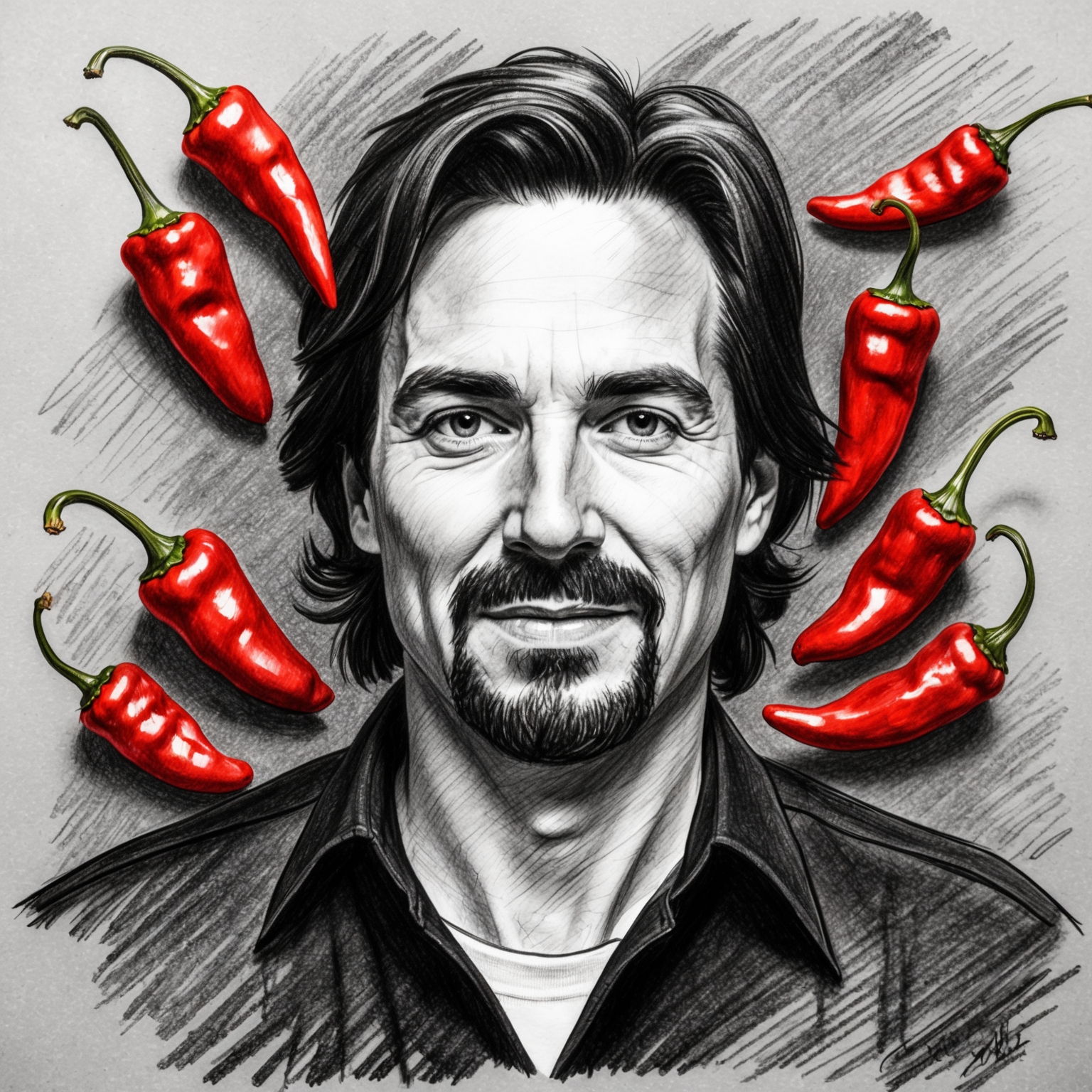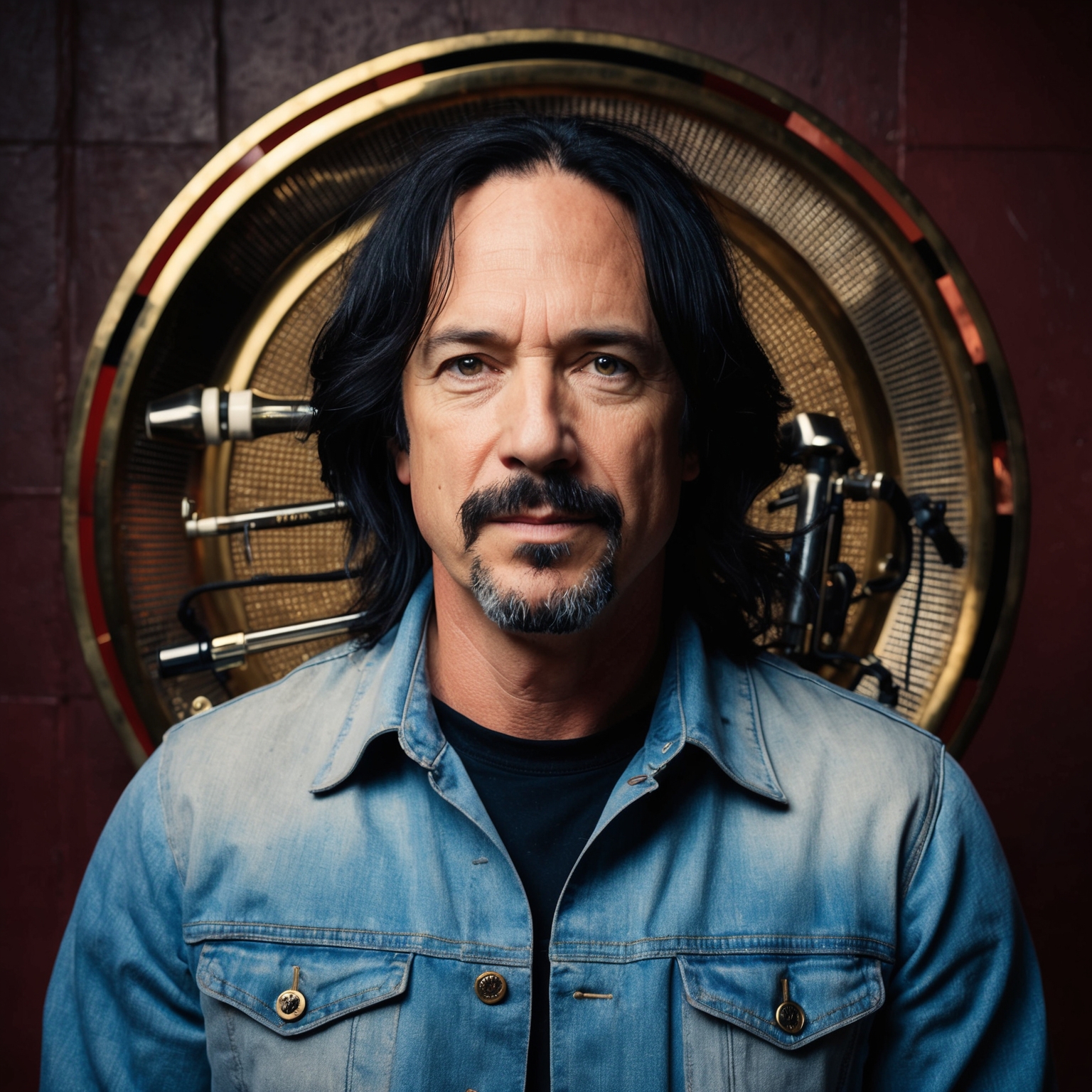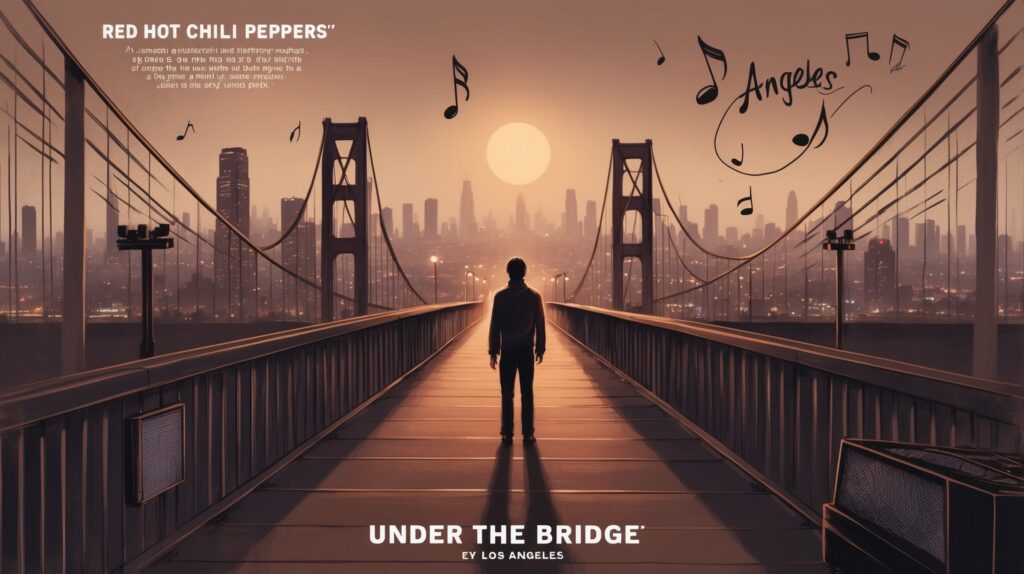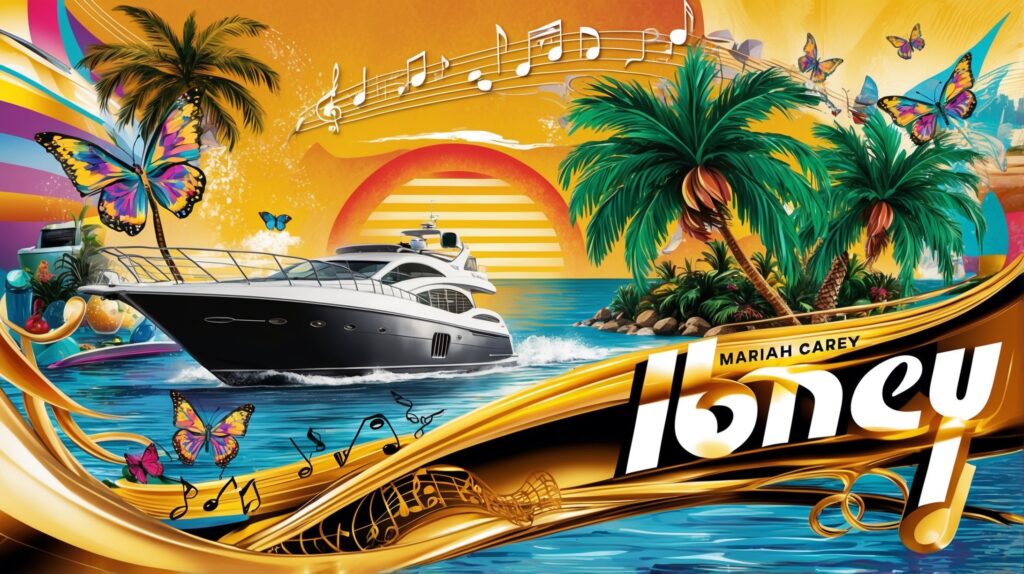Red Hot Chili Peppers | Under the Bridge
Exploring the Unique Journey of Red Hot Chili Peppers
Delve into the story of the Red Hot Chili Peppers during the era when “Under the Bridge” elevated their career, showcasing their signature fusion of funk, punk, and introspective melodies.

The Red Hot Chili Peppers, an iconic band in the rock scene, are renowned for their unique blend of funk, punk, and psychedelic rock. **”Under the Bridge”**, one of their most celebrated tracks, marked a pivotal point in their career, showcasing a more introspective and melodic side of their music. This song stands as a testament to the band’s ability to blend soulful lyrics with compelling instrumental arrangements, significantly broadening their audience and critical acclaim.
The Red Hot Chili Peppers were formed in 1983 in Los Angeles, California, with a lineup consisting of Anthony Kiedis (vocals), Michael “Flea” Balzary (bass), Hillel Slovak (guitar), and Jack Irons (drums). Their early years were marked by an energetic fusion of punk rock and funk, which set the foundation for their signature sound. Despite early struggles with lineup changes and the tragic loss of Slovak, the band persevered, with John Frusciante and Chad Smith eventually joining Kiedis and Flea to create what would become their most influential lineup.
The release of **”Under the Bridge”** in 1992 came during a transformative period for the band. After the commercial success of their previous albums, they continued to evolve their sound and broaden their thematic horizons. Collaborating with producer Rick Rubin, known for his minimalist yet powerful production style, they crafted a song that departed from their usual high-energy tracks. This new direction resonated with listeners, securing the band’s place in music history as they captured the emotional landscape of urban alienation and longing. In doing so, the Red Hot Chili Peppers opened the door to new creative possibilities and set the stage for their continued success in the music world.
Exploring the Creative Genius Behind ‘Under the Bridge’: The Composer’s Story
John Frusciante’s role as the composer of ‘Under the Bridge’ not only showcases his musical genius but also highlights his dynamic collaboration with the Red Hot Chili Peppers, blending his unique influences with the band’s signature sound.

When delving into the intricate layers of ‘Under the Bridge,’ one cannot overlook the powerful influence of its composer, John Frusciante. Born on March 5, 1970, in Queens, New York, Frusciante began playing guitar after being inspired by the vibrant energy of the 1970s rock scene. Despite his young age, he quickly ascended the ranks to become an indispensable member of the Red Hot Chili Peppers, contributing his profound musical acumen to the band’s sound.
John Frusciante is celebrated for his eclectic musical style, which encompasses a wide array of genres, from rock to alternative and funk. His influences include the legendary Jimi Hendrix, as well as more contemporary acts like The Cure and Fugazi. This blend of inspirations is evident in his incorporation of melodic guitar solos and intricate chord progressions, which have become hallmarks of his compositions.
A key aspect of Frusciante’s work is his collaborative nature and symbiotic relationship with the band, especially Anthony Kiedis, the lead singer and lyricist. Their partnership is a dynamic interplay of music and lyrics, with Frusciante’s melodies providing the perfect backdrop to Kiedis’s introspective and often personal lyrics. In ‘Under the Bridge,’ this synergy is particularly palpable, as the haunting guitar riff perfectly complements the song’s themes of isolation and longing, making it an anthem for generations.
Celebrating Recognition and Resonance Through Time
Exploring the recognition, covers, and pop culture impact of ‘Under the Bridge’ by Red Hot Chili Peppers.

Under the Bridge by the Red Hot Chili Peppers is not only an emotionally charged anthem but also a celebrated song with a litany of accolades. Released in 1992, it quickly transcended the boundaries of a typical rock ballad, earning critical acclaim and solidifying its place in music history. Its poignant exploration of isolation and identity resonated deeply, leading to its nomination for several prestigious awards. The song was nominated for a Grammy Award in 1993 for Best Rock Performance by a Duo or Group with Vocal, further affirming its impact on the music world at large.
Beyond formal awards, the song’s enduring popularity is evident in its frequent appearances in popular culture. Under the Bridge has been featured in various films, TV shows, and even video games, serving as a backdrop to moments of introspection and drama. Its presence in media platforms like Beverly Hills, 90210 and the video game Guitar Hero has helped introduce it to new audiences, amplifying its timeless quality and widening its reach.
The emotional depth and universal themes of Under the Bridge have inspired numerous artists to cover the song, putting their unique spin on this classic. The song was notably covered by British girl group All Saints, whose version reached number one on the UK Singles Chart in 1998. This cover brought a new dimension to the song, showcasing its versatility and the many ways different artists can reinterpret its message. Other covers by various musicians continue to emerge, each honoring the song’s legacy while highlighting its adaptability to diverse musical styles.
The Meteoric Rise and Enduring Appeal of “Under the Bridge”
“Under the Bridge” by Red Hot Chili Peppers soared to fame in the ’90s, peaking at number two on the Billboard Hot 100. Its introspective lyrics and iconic music video played pivotal roles in its chart success, making it a timeless anthem of personal reflection and urban isolation.

Released on March 10, 1992, “Under the Bridge” quickly became a defining moment in the career of the Red Hot Chili Peppers. The song served as the second single from their fifth studio album, “Blood Sugar Sex Magik.” In the weeks following its release, it captivated listeners with its introspective lyrics and soulful melody, standing in stark contrast to the band’s usual funk-driven, energetic sound. The track’s initial chart position reflected its potential, entering the Billboard Hot 100 at number 85. From there, it embarked on a steady climb that eventually saw it peak at number two, a significant achievement that underscored its broad appeal.
Compared to other chart-toppers at the time, “Under the Bridge” stood out significantly. While other successful tracks of the early ’90s often revolved around themes of pop and grunge, this song provided an emotional depth and vulnerability that wasn’t common on mainstream airwaves. Its chart success not only highlighted the band’s versatility but also their ability to connect with audiences on a personal level. This track was not a breakthrough hit per se but a strong follow-up to previous successes like “Give It Away” from the same album, further cementing the band’s presence in the music scene.
The enduring success of “Under the Bridge” can be attributed to a combination of strategic marketing and genuine public connection. The music video, showcasing iconic imagery of Los Angeles alongside lead singer Anthony Kiedis’s emotive performance, played a crucial role in elevating the song’s popularity. The critical reception was overwhelmingly positive, praising the authenticity and lyrical depth that Anthony Kiedis brought to the track. Over the years, “Under the Bridge” has transcended its status as just a hit song, becoming an anthem that resonates with anyone who has ever felt isolated in a bustling city. Its impact on popular culture is undeniable, touching countless fans and inspiring a host of musicians in subsequent years.
Visual Storytelling of ‘Under the Bridge’
The music video for “Under the Bridge,” directed by Gus Van Sant, visually captures the song’s themes of isolation and longing through stunning imagery of Los Angeles, enhancing the song’s impact and broadening its reach.

The music video for “Under the Bridge” by the Red Hot Chili Peppers is a pivotal element that complements the evocative nature of the song. Directed by Gus Van Sant, a renowned filmmaker known for his unique style, the video captures the poignant themes of isolation and longing expressed in the lyrics. The stunning visuals of Anthony Kiedis walking solitary through the urban landscape of Los Angeles highlight the personal and introspective journey depicted in the song. This choice of setting and narrative serves to deepen the connection between the audience and the emotional core of the track.
The music video contributed significantly to the song’s popularity, bringing the poignant message of “Under the Bridge” to a broader audience through its airing on MTV and other music channels. Its imagery effectively echoes the feelings of alienation and searching for connection, resonating with viewers worldwide. Moreover, the video’s reach helped solidify the Red Hot Chili Peppers’ status as a major act in the music industry, gaining recognition not only for their music but also for their visual storytelling.
In terms of reception, the music video was well-received by both critics and fans alike. Critics praised the video’s artistic direction and its ability to visually encapsulate the song’s powerful themes. The collaboration with Gus Van Sant brought a touch of indie film aesthetic, aligning perfectly with the band’s eclectic and artistic style. While there are no celebrity cameos, the focus remains firmly on Kiedis and the striking Los Angeles backdrop, which serves as both a character and a setting in this visual narrative.
Deciphering the Composition of ‘Under the Bridge’
Explore the intricate musical composition of ‘Under the Bridge,’ delving into its key, chord progression, and unique instrumental contributions.

‘Under the Bridge’ by the Red Hot Chili Peppers exemplifies a masterful blend of alternative rock that has echoed through the decades since its release in 1992. One captivating aspect of this song lies in its cohesive yet intricate musical structure that unfolds seamlessly across its five-minute duration. Written in the key of E major, the song features a moderately slow tempo that allows its poignant lyrics to resonate deeply with listeners.
The chord progression employed is relatively simple yet profoundly effective, enhancing the song’s emotive quality. The verses maintain a steady harmonic foundation built on chords such as E, B, and C# minor, transitioning smoothly into a melodic bridge that brings forth a sense of longing and introspection. Throughout the song, the tempo maintains consistency, supporting its lyrical narrative while allowing for dynamic shifts that heighten emotional impact.
The melody and harmony of ‘Under the Bridge’ are driven by the fusion of Anthony Kiedis’s heartfelt vocal delivery and the distinct instrumental elements furnished by the band. The song’s rhythm is notably influenced by Chad Smith’s drumming, which delivers a nuanced backdrop that enhances texture without overpowering the melody. This is complemented by Flea’s bass lines, which add depth and dimension, while John Frusciante’s guitar work provides a gently cascading arpeggio that defines the song’s unmistakable riff. Together, these elements produce a soundscape that is both relaxing and introspective, reflecting the evocative lyrics.
In the context of the Red Hot Chili Peppers’ discography, ‘Under the Bridge’ signifies a pivotal point in the band’s evolution. Known for their high-energy funk-infused tracks, this song marked a mature shift towards more introspective themes and a more accessible sound. Compared to their earlier works such as the frenetic ‘Give It Away,’ ‘Under the Bridge’ reveals a tonal restraint and vulnerability that would later be recognized as a key element in the band’s musical evolution.
Behind the scenes, the song was recorded at the renowned Ocean Way Recording studio, with Rick Rubin at the production helm. An interesting anecdote from the recording sessions highlights Rubin’s suggestion to add a choir to the song’s climax—a decision that added remarkable emotional depth, elevating the song’s already powerful finale. This nuanced addition played a crucial role in ensuring the track’s enduring appeal, cementing its place as a timeless classic.
Exploring the Depths of Isolation and Urban Companionship
Unpack the poignant lyrics of ‘Under the Bridge’ by Red Hot Chili Peppers, exploring themes of urban isolation, personal longing, and the emotional nuances that have captured audiences over the years.
Sometimes I feel like my only friend
Is the city I live in, the city of angels
Lonely as I am, together we cryI drive on her streets ’cause she’s my companion
I walk through her hills ’cause she knows who I am
She sees my good deeds and she kisses me windy
Well, I never worry, now that is a lie
I don’t ever want to feel like I did that day
Take me to the place I love, take me all the way
I don’t ever want to feel like I did that day
Take me to the place I love, take me all the way
Yeah, yeah, yeah
…
******* This Lyrics is NOT for Commercial use *******
 Under the Bridge by the Red Hot Chili Peppers is an evocative exploration of loneliness, urban alienation, and the search for connection. The lyrics, penned by lead vocalist Anthony Kiedis, delve into the complexities of feeling isolated in a bustling city, a sentiment that resonates universally with anyone who has ever felt alone in a crowd. The song’s primary theme revolves around the dichotomy of urban alienation and the solace found in the cityscape itself, subtly painting Los Angeles as both a companion and a confine.
Under the Bridge by the Red Hot Chili Peppers is an evocative exploration of loneliness, urban alienation, and the search for connection. The lyrics, penned by lead vocalist Anthony Kiedis, delve into the complexities of feeling isolated in a bustling city, a sentiment that resonates universally with anyone who has ever felt alone in a crowd. The song’s primary theme revolves around the dichotomy of urban alienation and the solace found in the cityscape itself, subtly painting Los Angeles as both a companion and a confine.
The narrative of Under the Bridge is poignant and introspective, told from a first-person perspective that allows listeners to step into the shoes of Kiedis. This perspective adds intensity to the storytelling, as it is deeply personal, reflecting the artist’s own experiences and memories. As the song progresses, the lyrics transition from depictions of solitary city wanderings to a yearning for a sense of belonging and love—’the place I love.’ This narrative arc heightens the emotional impact of the song, encapsulating a journey from despair to a hopeful plea for connection.
The lyrics employ a mixture of literary devices that enhance their emotive power. Metaphors abound, with the city of Los Angeles anthropomorphized as a living entity—a partner, friend, and confidant. This usage of the city as a metaphorical entity highlights Kiedis’s complex relationship with it. There’s an intricate dance of wordplay and personification that not only captivates the imagination but also deepens the emotional resonance of the lyrics. This intricate layering of expression is what allows the song to stand out, not just in the Red Hot Chili Peppers’ discography but also in the broader landscape of rock music.
Comparatively, Under the Bridge aligns with other introspective songs by the band, such as Scar Tissue, in exploring solitude and personal struggles. However, the unique urban environment depicted in Under the Bridge sets it apart, offering a distinctive portrayal of city life as both a backdrop and a focal point. The cultural references to Los Angeles imbue the song with a sense of place that enhances its relatability, especially to those familiar with the city’s landscapes.
Emotionally profound, the lyrics of Under the Bridge touch on themes of alienation, despondency, and the human need for belonging. Its evolution in live performances often sees Kiedis imbuing the song with even more emotion, sometimes altering the delivery to reflect the song’s enduring significance to him. Understanding these layered meanings allows fans to explore various interpretations, creating a personal connection that continues to endure long after the song has ended.
Did you know Under the Bridge was almost a poem? Kiedis turned it into a classic tune! 🎸✨ Feeling the LA vibes? #RHCP #FunFact #MusicTrivia #UnderTheBridge tinyurl.com/3pz96t6k
Click to Tweet







